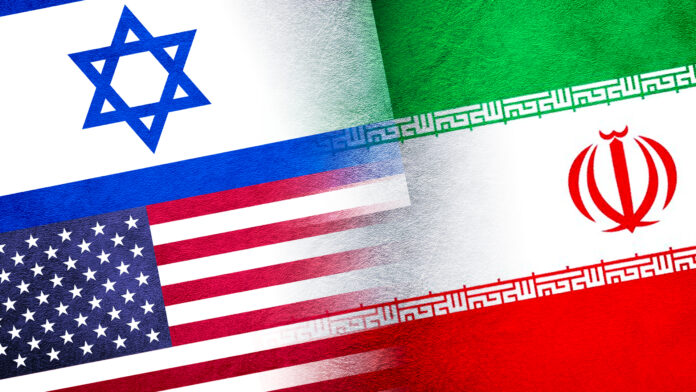Mirna Fahmy
Over the past week, the Middle East has witnessed a series of coordinated strikes by Israel and the United States targeting Iran-backed groups. Israel has resumed attacks on Hamas in Gaza while also launching strikes on Hezbollah in Lebanon and ISIS-affiliated bases in Syria. Meanwhile, the U.S. has carried out multiple airstrikes against Houthi positions in Yemen, either in coordination with or parallel to Israeli operations.
Israel Resumes Fighting Hamas
After nearly two months of relative calm under the U.S.-brokered ceasefire, which had been in effect since January 19, 2025, Israel resumed military operations against Hamas in Gaza on March 18, 2025. According to Gaza’s Health Ministry, a wave of Israeli airstrikes has killed at least 200 people.
Israel launched its most extensive assault since the January ceasefire, reportedly killing senior Hamas Politburo official Abu Obeida al-Jamasi and Major General Mahmoud Abu Waffa. Other high-ranking Hamas figures killed include Essam Al-Daalis, Head of Hamas’ Government Follow-up Committee; Ahmed Al-Hatta, Undersecretary of the Hamas-run Ministry of Justice; Mahmoud Abu Watfa, Undersecretary of the Interior Ministry; and Bahjat Abu Sultan, Director General of the Internal Security Service. Hamas mourned their deaths, calling them “symbols of national action,” as Israel escalated its campaign targeting the group’s leadership.
Israeli Defense Minister Israel Katz issued a stern warning: “Hamas must realize that the rules of the game have changed. If they don’t immediately release all the hostages, the gates of hell will open.” Speaking from an airbase, Katz vowed that Israel would use its full military force—by air, sea, and land—if Hamas fails to comply. He emphasized that the offensive would continue until both the hostages and Israel’s southern residents are safe.
Initially, Hamas released all surviving hostages but later ceased further releases, even withholding the bodies of deceased captives. This move provoked widespread outrage, particularly because Hamas had ceremoniously handed over the released hostages to the Red Cross amid public celebrations.
On March 6, 2025, U.S. President Donald Trump issued a final warning to Hamas, demanding the return of all bodies of deceased hostages. “Bring out all of the dead bodies of the people you murdered, or it is OVER for you,” he declared. Condemning Hamas as “sick and twisted” for withholding the bodies, Trump directly addressed Hamas and the people of Gaza:
“I am sending Israel everything it needs to finish the job. Not a single Hamas member will be safe if you don’t do as I say. I have just met with your former hostages, whose lives you have destroyed. This is your last warning! For the leadership, now is the time to leave Gaza while you still have a chance. To the people of Gaza: A beautiful future awaits, but not if you hold hostages. If you do, you are dead! Make a smart decision. Release the hostages now, or there will be hell to pay later!”
White House Press Secretary Karoline Leavitt later confirmed that Israel had consulted the U.S. before launching its most extensive airstrikes since January. Leavitt warned that Hamas and other adversaries “will see a price to pay” if they continue their actions.
Third Ceasefire Deal Fails to Hold
This marks the third ceasefire agreement that many Israeli politicians and analysts had predicted would collapse. Saudi-Lebanese cleric and current Secretary-General of the Arab Islamic Council, Mohamad Ali El Husseini had already dismissed its longevity, posting on X on January 16, 2025:
“The first phase of the ceasefire agreement in Gaza will be implemented without any problems. However, the real issue will arise in the second phase, causing the agreement to falter due to numerous obstacles.”
El Husseini further argued that this agreement would not bring an end to the violence. Instead, he anticipated an escalation of armed conflict aimed at eliminating military presence in the Gaza Strip. He noted that Israel would refuse to withdraw from the Philadelphia Corridor and border crossings, preventing Hamas from rearming and rebuilding its military and organizational capabilities. Additionally, unresolved political questions regarding Gaza’s governance would further undermine the ceasefire’s viability.
During the ceasefire, reports suggested that Hamas was consolidating its position, repurposing unexploded munitions, and attempting to reassert control over Gaza—actions Israel perceived as a direct threat to its security objectives.
Gaza’s Reconstruction Plan
On March 4, 2025, an Arab Summit was held in Cairo, Egypt, to discuss Gaza’s reconstruction plan—a proposal that Jordan’s King Abdullah II had hinted at during his meeting with Trump.
The summit endorsed Egypt’s $53 billion plan to rebuild Gaza by 2030, ensuring that its 2 million Palestinian residents would not be displaced and that core Palestinian national interests remained intact. The plan includes clearing debris, addressing unexploded ordnance, and establishing a technocratic governing body unaffiliated with Hamas or the Palestinian Authority (PA).
However, the Trump administration appeared to reject Egypt’s plan. The U.S. State Department and White House deemed it “inadequate,” with National Security Council spokesperson Brian Hughes stating that it failed to address the reality that Gaza was “currently uninhabitable.” President Trump instead continued to advocate for his own vision of depopulating and redeveloping Gaza, even posting an AI-generated video on social media depicting a futuristic, prosperous Gaza under his plan.
Despite this initial rejection, the U.S. position remained somewhat fluid. U.S. Special Envoy to the Middle East Steve Witkoff described the Egyptian plan as a “good faith first step” with “compelling features,” indicating that Washington was open to further negotiations.
By March 17, 2025, Irish Minister Micheál Martin stated that Trump had conditionally agreed to Egypt’s plan, provided that Hamas was removed from power and Gaza was fully disarmed. Martin emphasized that Trump had reaffirmed his commitment to ensuring Palestinians were not forcibly displaced but maintained that security conditions must be met before U.S. support could be secured.
On March 15, 2025, President Trump authorized a wave of airstrikes against the Houthi rebels in Yemen, targeting their radars, air defenses, missile systems, and other military installations across the country, including in the capital Sanaa and Saada Governorate. The operation was part of a broader effort to restore security in the Red Sea, where Houthi attacks had disrupted commercial and military shipping routes.
According to the Houthi-run Health Ministry, the strikes resulted in at least 53 deaths, including five children and two women, and left 98 others injured. U.S. National Security Advisor Michael Waltz claimed that several Houthi leaders had been killed, though there was no confirmation regarding the group’s overall leader, Abdul Malik al-Houthi. The Houthis denounced the attacks as “war crimes” and vowed retaliation.
In a controversial policy shift, Trump re-designated the Houthis as a Foreign Terrorist Organization (FTO) on January 22, 2025, reversing President Joe Biden’s earlier decision to remove the group from the list. Biden had lifted the designation in February 2021, citing humanitarian concerns. However, Trump justified the reversal by pointing to the Houthis’ continued attacks on Red Sea shipping and U.S. forces, which had intensified since 2023.
At a Ramadan Iftar assembly, Egyptian President Abdel Fattah El-Sisi revealed that the Suez Canal had suffered an $800 million monthly loss due to ships avoiding the Red Sea amid Houthi attacks. Egypt’s total losses in 2024 alone amounted to $7 billion, dealing a significant blow to its economy.
Israel Targets Hezbollah in Lebanon
Israel launched airstrikes against Hezbollah positions in southern and eastern Lebanon following a wave of rocket attacks from Lebanese territory. The escalation marked the most significant military engagement since a November 2024 ceasefire. The strikes resulted in casualties, including at least two deaths—one of whom was a child.
Hezbollah denied responsibility for the rocket attacks and reiterated its commitment to the ceasefire. However, Israeli Prime Minister Benjamin Netanyahu ordered “decisive action” against Hezbollah targets, stating that Israel would not tolerate any threats to its sovereignty.
The Trump administration pressured Israel to withdraw from southern Lebanon by February 18, 2025, in line with the November 2024 ceasefire agreement. While Israel sought to extend the deadline, arguing for a continued military presence at five key border positions, the U.S. maintained that the Lebanese army and UN peacekeepers should assume security responsibilities.
Describing how the region will be bloody hell in Ramadan, on March 19, 2025, El Husseini posted on X that Hezbollah was retreating militarily, politically, and strategically in response to the multi-front pressure it faced. He suggested that while Hezbollah remained a formidable force with a stockpile of missiles and thousands of fighters, its leadership was resorting to strategic deception, waiting for a future opportunity to strike.
However, on March 22, 2025, El Husseini warned that Hezbollah commander Hajj Khalil Harb had launched rockets from southern Lebanon into Israel. He further suggested that this was only the beginning of a new wave of military operations, including potential Israeli soldier abductions.


